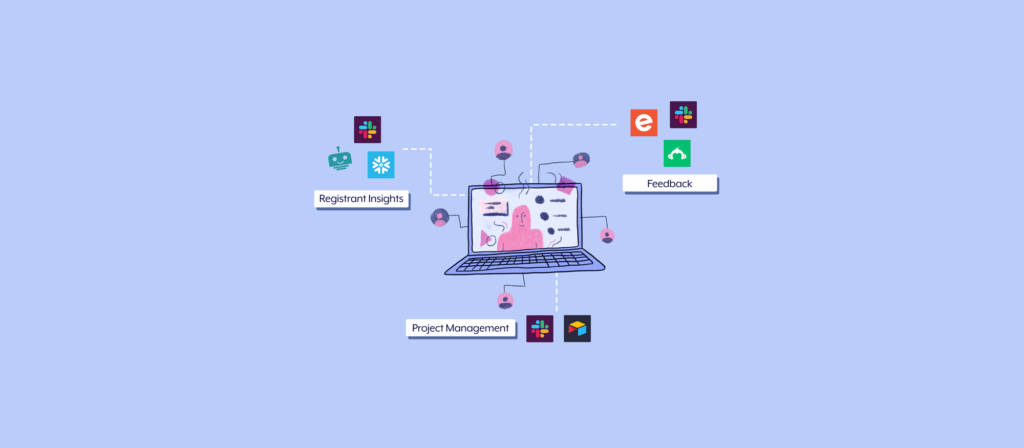More than half of marketing leaders (60%) believe that events are the most important marketing channel for hitting their business goals.
Despite its perceived value, the same study found that the expected budget for organizing and hosting events is expected to drop. This begs the question: What can your team do to host more successful events while working with a smaller budget?
The answer: marketing automation. Using marketing automation, your team can better personalize every event and manage any more easily. We’ll show you how by walking you through 3 specific examples!
1. Automatically Share Registrant Data with Event Organizers
As your team starts collecting registrants, you can use marketing automation to easily and quickly pick up on the types of people who plan to attend. This can help your team answer questions like:
- Are attendees mostly customers or prospects?
- How do the customers who plan to attend use our product?
- How have the prospects engaged with our organization previously?
- What types of roles do these attendees work in?
- What types of companies do they work at?
With these insights on-hand weeks, if not months, in advance, your team can refine the event’s content in a way that better caters to attendees’ interests.
Here at Workato, we’ve put this marketing automation into practice for any Unexpected Automations event. Here’s how the workflow works:
1. Once someone signs up for an event, the workflow gets triggered.
2. Workbot, our enterprise platform bot, collects the registrant’s product usage data in our data warehouse (Snowflake).
3. Workbot then shares the registrant’s information in a specific Slack channel, where the team organizing the webinar can review it.
Here’s more on the types of data we collect and the benefits we see from using the automation:
Related: 3 real-world examples of performing drip automation
2. Create a Seamless Workflow for Collecting and Sharing Attendee Feedback
Even after discovering those who plan to attend, you might not know what they truly hope to get from the event until you ask them directly.
You can do just that and share their responses across your team by integrating the platform you use to collect registrants (e.g. Eventbrite) with the one you use to collect survey responses (e.g. SurveyMonkey) and the one you use to share survey responses internally (e.g. Slack). Then, you can build a workflow that can work as follows:
1. Any time a registrant signs up, the workflow gets triggered.
2. The registrant receives a survey via email that asks them questions around what they hope to learn, why they decided to sign up, etc.
3. Once the registrant submits the survey, their responses are automatically shared with the appropriate employees via chat (e.g. a Slack channel), allowing everyone who plays a role in organizing the event to see what attendees hope to get out of it.
3. Project Manage Event Preparation and Promotion with Ease
You likely have tons of tasks that you have to work through in advance of your event. These can range from recruiting speakers to developing content that promotes the event.
To help your team execute these tasks on time and move from one to the next seamlessly, you can connect your team’s project management platform (e.g. Airtable) with Slack and build out the following workflow:
1. Once someone marks a record (their task) as “Done” in a platform like Airtable, the workflow gets triggered.
2. The event organizers get notified through a Slack channel.
3. From Slack, an employee can kickstart the process of tackling the next task by updating the status of its record.
Now that you know how to implement these 3 marketing automations, your team should feel good about preparing for any event, as well as providing an event experience that your attendees are looking for!
Ready to use marketing automation to deliver better events? Learn how Workato, the leading enterprise automation platform, can help by scheduling a demo with one of our experts!
